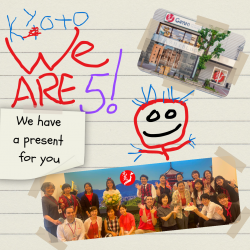Shogun is an amazing show, but what is true and what is fiction?
As this amazing TV show is gaining more and more accolades, we thought to ask our in-house 戦国時代 (Sengoku-jidai or the era of the warring states) geek Demi-san about it and it ended up being a bit of a trip down the annals of history to one of the most famous battles in Japanese history at Sekigahara (関ケ原) valley. If you have not seen the show, please do yourselves a favour and do so, and then come back to this post, but if you either don`t care or have seen the show, please read on!
WARNING – Spoilers ahead
The show:
At the show’s end, as Yabu-sama is breathing his last breath, we are given a glimpse of what Toranaga-sama is planning. During that montage, we are shown two opposing armies with Lord Ishido on one side and Toranaga on the other….and then, the show sadly ends.
But what does it actually mean? Well, as you know the book is kind of based on history, though massively fictionalised. After all the plotting and clever moves by Lord Toranaga, the pieces of this chess game (or shogi game) were set and he was finally well-positioned to take over Japan and establish the Toranaga shogunate that is to continue for almost 300 years. Almost three centuries of relative peace and prosperity for the 日ノ本 (Hinomoto) or Japan.
Real life:
Though the show is very intricate with a lot of moving parts, real history is no less complex and full of intrigue. What transpired before the battle we are about to talk about, is a topic for a book, or several books, but let us at least establish the main players.
Lord Toranaga – is actually Tokugawa Ieyasu (徳川 家康).
Lord Ishido – is actually Ishida Mitsunari (石田 三成).
Since we are talking about, not what had transpired before the battle we only see as a montage, but a battle itself, these would be the main players in our little story. Though these two do not require any introductions, here are brief biographies of the two:
Our Heroes
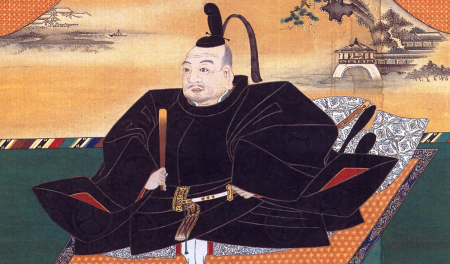
Tokugawa Ieyasu (徳川 家康)
Tokugawa/Toranaga – born in 1543 in Okazaki Castle, which is where Okazaki city is now. He had a very tumultuous childhood and growing up, but cutting a long story, very, very short, he ended up in the services of Toyotomi Hideyoshi (豊臣 秀吉) who is shown in the show to pass away. And just like in the series, after the passing of Toyotomi Hideyoshi the five regents came into power, but unlike in the show, Ishida Mitsunari was not one of the members. Though Toyotomi`s successor was technically a 5-year-old Toyotomi Hideyori (豊臣 秀頼), we don’t need to be historical geniuses to realise that it was just in name. As with any drastic change of the leadership, a political vacuum was created which was swiftly filled by two big factions. But before we move on, let’s discuss:
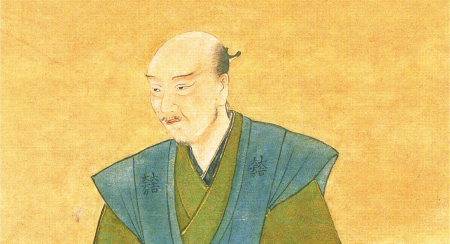
Ishida Mitsunari (石田三成)
Ishida/Ishido – born in 1559 in what we call Shiga prefecture now. His life was no less difficult, which included a number of armed conflicts in Japan and overseas in the Korean peninsula. He was a very well-respected bureaucrat and also it has been recently discovered that he was an accomplished strategist.
Let’s just say that the two did not like one another too much, and though some historians argue that it was a personal grudge, while others state that it was purely political in nature, the fact remains the same, shortly after Toyotomi Hideyoshi`s passing, very shortly Japan was once again divided into two factions.
The Western Army – was technically controlled by Mori Terumoto or the Mori clan, but de-facto led by Ishida.
The Eastern Army – controlled and led by Tokugawa Ieyasu.
Prior to the big battle that happened in the aforementioned Sekigahara Valley, there were a number of small brush conflicts with mixed results for both armies, but eventually main bodies of both armies gathered at the Sekigahara Valley!
The Battle
The battle took place on the 21st of October 1600. If you can imagine tens of thousands of warriors being drawn to this one place in the centre of Japan, you may have some idea about the tension that was in the air. The fate of Japan was hanging in the balance and at this point of the battle it could to any side. Ishida`s army was positioned on the high ground on the western side of the valley, whereas Tokugawa and his allies were on the eastern side and to the south of the valley itself. It was still early and the fog was very thick in the valley, so the armies were thought to have been incredibly close to one another at the beginning. You could cut the tension with a knife at this point and it was by the vanguard of Ii clan whose crimson armour could be seen at Hikone castle near Lake Biwa today. This was the beginning of the battle and very soon there were small engagements all over the valley.
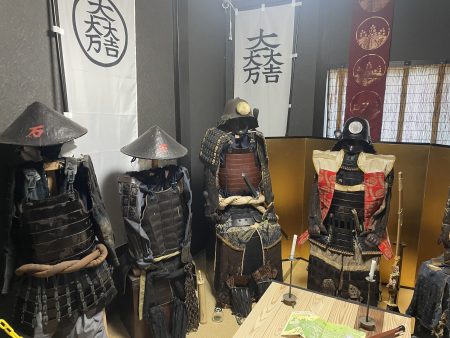
Actual armour of the Western Army. You see the kanji 石 or Ishi printed.
For a while, the battle was pretty much at a stalemate, but defectors joining the Tokugawa`s side were soon to take their toll on the Western Army. It is still debated what, actually, transpired, but the fact remains the same. A good number of Western Army leaders have defected to the Tokugawa Ieyasu side but most historians agree that the biggest change came when a 19-year-old daimyo and his samurai stationed on a hill south of Ishida’s forces attacked the right flank of Ishida’s armies and clashed with a small troop of Otani Yoshitsugu.
The attack lives in infamy in Demi-sans brain and the traitor`s name is Kobayakawa Hideaki (小早川 秀秋). Regardless of what Demi-san feels about it, the fact is that this attack was one of the more devastating blows to the Western Army and soon after the Western Army crumbled and Ishida was forced to retreat. Otani, having lost the engagement committed seppuku and is still buried on the battlefield. You can visit his burial site in Sekigahara if you would like. The sad part is that Kobayakawa died only a couple of years later at the age of 21 and left no heirs, effectively ending the Kobayakawa line.
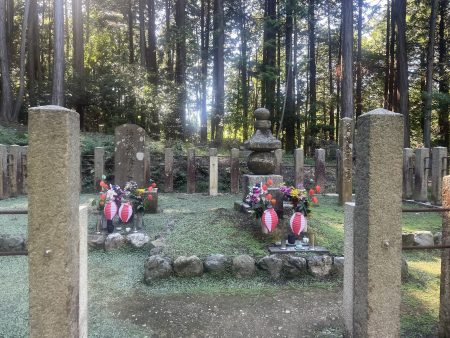
Tomb of Otani Yoshitsugu (大谷 吉継)
That concluded the battle of Sekigahara and soon after Ishida and a number of other officials were executed. Some smaller battles happened after that and then Tokugawa Ieyasu established the Tokugawa Shogunate so the Edo period could start. Just to draw a full circle, the loyal lord Toranaga (Tokugawa) actually attacked Osaka Castle and caused Toyotomi Hideyori`s death in 1615 so here is to loyalty to your lords I guess.
This is the story behind the montage that was happening in Lord Toranaga`s imagination at the end of the wonderful TV-show.
If you want to learn more about the battle or even feel like you are one of the warriors in the field during this momentous day, you should pay a visit to the Sekigahara Museum in the valley of Sekigahara. It is an unforgettable experience if you like history and would like to touch history. Our Kyoto and Nagoya schools surround the valley and you can visit it in one day from each location.
Fingers crossed for season 2!


